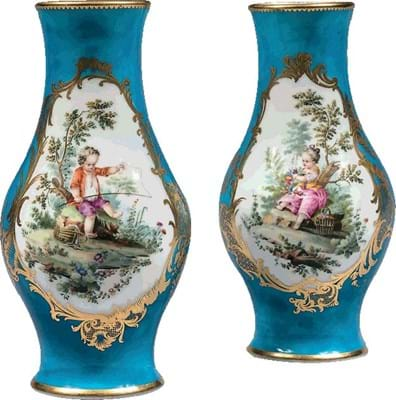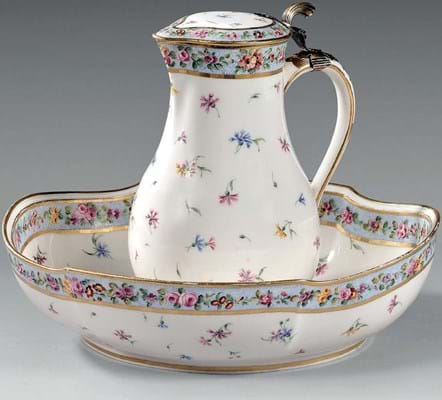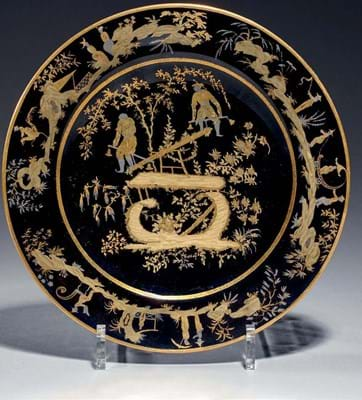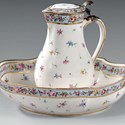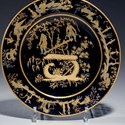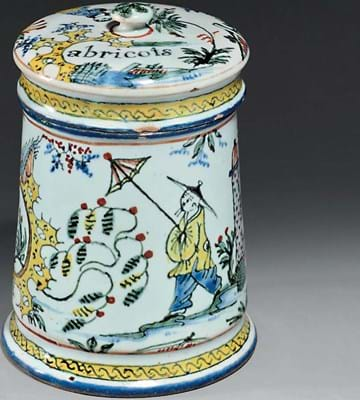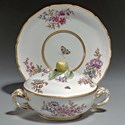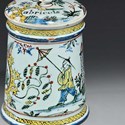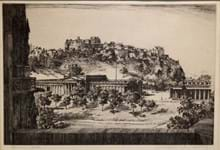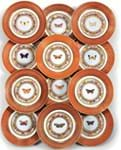Recent auctions on both sides of the Channel produced a series of highlights in the field of European ceramics (also see the Bonhams Marly Rouge report in this edition).
In Paris on June 6 at Drouot, porcelain with notable provenances from the best-known European factories was in the spotlight.
In its sale of Old Masters, sculpture, works of art and ceramics, Thierry de Maigret (23% buyer’s premium) offered around 50 lots of 18th century Sèvres and Vincennes from the collection of Nadine Ortiz-Patino. Around half of the pieces were biscuit models, the remainder polychrome porcelain.
All bar two lots found buyers, to raise a premium-inclusive figure just shy of €600,000.
Flowers and fishing
The best-seller, as predicted, was a pair of 7½in (18.5cm) high baluster-shaped vases, or urnes antiques, decorated to a bleu celeste ground with reserves after Boucher of children in landscape settings picking flowers and fishing.
Bearing a date letter for 1756 and a painter’s mark for Vielliard, these had a provenance back to 1963 when they were sold by Sotheby’s in London from the René Fribourg collection. In Paris last month they sold for a mid-estimate hammer price of €62,000 (£54,870).
The museum of the Cité de la Céramique of Sèvres was in action to pre-empt a silver-gilt mounted water jug and basin, for which it holds the original plaster model.
The ‘first size’, 8in (19.5cm) high jug and ‘second size’ 10½in (26.5cm) wide basin, with date marks for 1770 and a painter’s mark for Jean-Jacques Pierre, were decorated with scattered floral sprigs and blue borders.
The set is thought to have been purchased by Madame du Barry in September 1770 and was last under the hammer in 2013 at Christie’s Paris rooms, where it realised €27,000. This time, bidding reached €23,000 (£20,355), at which point the museum stepped in to secure it.
Diplomatic gifts
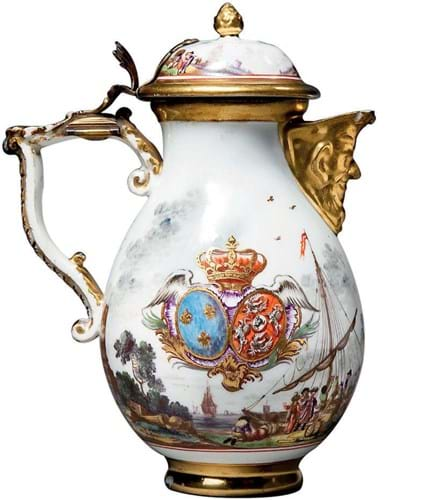
A Meissen milk jug from the Marie Leszcynska service pre-empted by the Chateau of Versailles for €28,000 (£24,780) at Binoche et Giquello’s sale. Image copyright: Binoche et Giquello / Drouot.
On the same day in Paris, in another mixed-discipline ‘Classic’ sale, Binoche et Giquello (24% buyer’s premium) offered a small group of pieces from one of the famous Meissen armorial services made as diplomatic gifts for presentation by the electors of Saxony.
This chocolate service had been presented by Augustus III to Marie Leszcynska, queen of France in 1737.
The 56-piece service was given by Augustus, who was also king of Poland, to Marie, who as well as being the wife of Louis XV was also the daughter of his rival Stanislas I with whom he disputed the throne after the death of Augustus II.
It was part of a charm offensive to lessen the ongoing tension between Poland and France following the war of succession (1733-38).
Binoche et Giquello had a milk jug, a chocolate cup and saucer and two extra saucers to offer as four lots in June, all decorated with the arms of France and Poland as well as military, maritime and chinoiserie scenes.
The silver-gilt-mounted milk jug, the grandest of the components, was duly pre-empted for €28,000 (£24,780) by the Château of Versailles which will add it to the eight other pieces from the service it already holds.
The chocolate cup and saucer sold for €9000 (£7965), one saucer for €8500 (£7220) and the other for €3000 (£2655).
Christophe Perlès sale
The first tranche of the stock sale of Paris ceramics dealer Christophe Perlès went under the Peschetau Badin (26% buyer’s premium) hammer at Drouot on June 18. The auction was prompted by Perlès’ decision to change direction as a dealer.
The 150-lot offering encompassed porcelain and tin-glazed earthenwares (majolica, faience and delft) from across continental Europe ranging back as far as the early 16th century (courtesy of some Italian maiolica) up to Vienna porcelain from the early 19th century.
Overall, around two-thirds of the lots found buyers, although the take-up was stronger for the earthernwares and the French porcelain that followed it than the Italian and German porcelain that rounded off the event.
Topping the list was a rare Sèvres hard-paste porcelain plate decorated with gold and platinum on a black ground with chinoiserie motifs (including two figures balancing on a see-saw after an engraving by Pillement).
The 9½in (24cm) diameter piece, which bore a date letter for 1791 and gilders’ marks for Vincent and Bulidon, realised €33,000 (£29,205) against a €20,000-30,000 guide.
Plenty of interest emerged for a c.1750-52 Vincennes ecuelle and stand decorated with floral bouquets and insects and a fruiting bud handle to the cover. It doubled the guide at €23,000 (£20,355).
Among the earthenwares, a small selection of Rouen pieces was sought-after. There was a group of early 18th century pieces from the Poterat workshop, all decorated predominantly in blue or blue and iron-red with the lambrequin motifs characteristic of this class of faience.
A 10in (24.5cm) diameter plate; a 10in (25cm) high helmet shaped jug inspired by a silver form and a 2ft (60cm) long oval platter proved the most expensive at €7000 (£6195), €4000 (£3540) and €4000.
Even more in demand were two polychrome decorated pieces.
A triangular format writing stand with two inkwell apertures from c.1750 realised €10,500 (£9290) against a guide of €2000-3000.
A mid-18th century cylindrical covered pot decorated with Chinese figures and inscribed Abricots to the cover, also guided at €2000- 3000, was knocked down for €13,500 (£11,945).
£1 = €1.13


